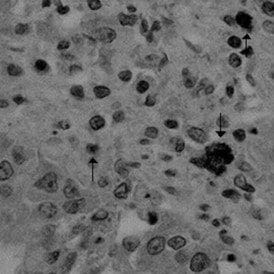
Get A Testing Quote
Human Parainfluenza Virus
Virus: Human Parainfluenza Virus
Structure: Enveloped
Genome: Single-stranded negative sense RNA
Family: Paramyxoviridae
Primary Host: Humans
Disease(s) Caused: Croup, Bronchitis, Bronchiolitis, Pneumonia
Symptoms: Sore throat, Wheezing, Irritability, Sneezing, Ear pain, Decreased appetite
Potential Complications: Secondary Bacterial Infections
Transmission Mode: Contact with aerosols, contact with contaminated fomites
Sites of Community Outbreaks: Schools, Hospitals, Play areas
Importance of Parainfluenza Virus
Human Parainfluenza viruses (HPIVs) are members of the Paramyxoviridae family. They were initially distinguished from the Influenza viruses in the latter part of the 1950s from the lower respiratory system. This virus was tested in embryonic eggs and was found to have poor growth. This also shares very few antigenic sites with the Influenza virus. There are now four known serotypes of HPIV. The four types are evenly split into two genera, Respirovirus (HPIV-1 and HPIV-3) and Rubulavirus (HPIV-2 and HPIV-4).
Parainfluenza viruses affect infants, young children, immunocompromised, and the elderly most frequently and account for 40% of lower respiratory tract illness hospitalizations in children and 15% in adults. Symptoms regularly present themselves as cold-like symptoms, ear pain, irritability, and decreased appetite. Common secondary illnesses that are caused by HPIVs include pneumonia and laryngotracheobronchitis (croup). Less frequent secondary complications include apnea, bradycardia, parotitis, and respiratory distress syndrome.
Importance of Disinfection
Human Parainfluenza virus is “enveloped”, meaning that a lipid-containing covering (envelope) surrounds the viral nucleocapsid. The lipids in the envelope of Human Parainfluenza viruses are derived from the cellular (plasma) membrane of the host cell as new virions undergo the process of budding towards the end of replication and are subsequently released into the extracellular environment.
The factors influencing virus survival on surfaces are varied and many and include intrinsic virus properties, such as structure (enveloped vs. non-enveloped) and strain, characteristics of the surrounding environment (for example, humidity), and fomite traits, such as cleanliness. Studies have documented the ability of parainfluenza viruses to remain infectious on objects from several hours to days in a variety of environments including daycare centers and nursing homes.
The most common form of transmission for this virus is through aerosols however, fomites (environmental objects) have become an increasing concern to the spread of parainfluenza viruses. Fomites can become carriers when contaminated aerosols land and rest on countertops, doorknobs, and other surfaces. Alternatively, they can become carriers when excretions from mucosal membranes on the hand or mask of an infected individual come into contact with a surface.
Schools tend to have the hardest time containing outbreaks of this virus as there are many shared potential fomites around a classroom that do not get disinfected between uses. This is similar to public play areas as they are not regularly disinfected.
Relevant Literature
Henrickson, K. J. Parainfluenza viruses. Clinical microbiology reviews (2003). 16(2): 242-264
Branche, A. R. and Falsey, A. R. Parainfluenza Virus Infection. Seminars in Respiratory and Critical care Medicine (2016). 37(4): 538-554
Shao, N. Genetic Characteristics of Human Parainfluenza Virus Types 1-4 From Patients With Clinical Respiratory Tract Infection in China. Frontiers in Microbiology (2021). Available by: https://www.ncbi.nlm.nih.gov/pmc/articles/PMC7171724/
Parija, S. C. Human Parainfluenza Viruses (HPIV) and Other Parainfluenza Viruses. Medscape (2020). Available by: https://www.ncbi.nlm.nih.gov/pmc/articles/PMC7171724/
Image from: https://journals.asm.org/doi/10.1128/CMR.16.2.242-264.2003
Share

